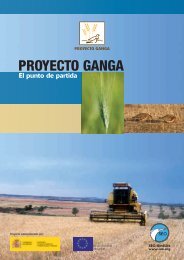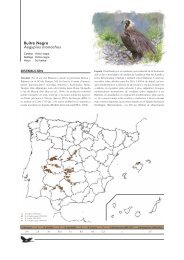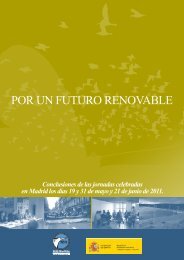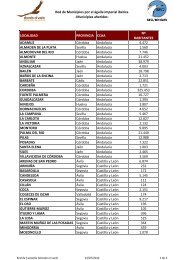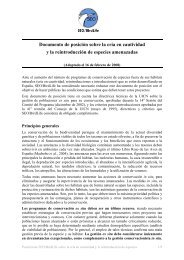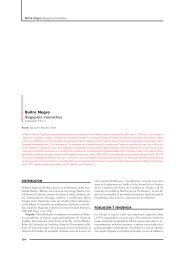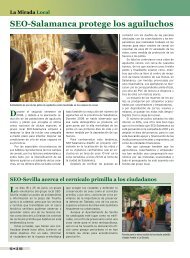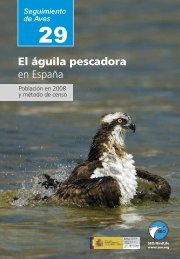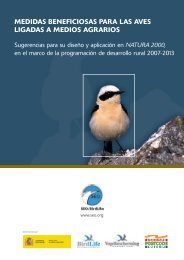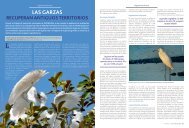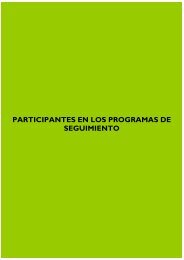El milano real en España. II Censo Nacional (2004) - SEO/BirdLife
El milano real en España. II Censo Nacional (2004) - SEO/BirdLife
El milano real en España. II Censo Nacional (2004) - SEO/BirdLife
Create successful ePaper yourself
Turn your PDF publications into a flip-book with our unique Google optimized e-Paper software.
Red kite in Spain<br />
SUMMARY<br />
For the second time, <strong>SEO</strong>/<strong>BirdLife</strong> has undertak<strong>en</strong> a national c<strong>en</strong>sus of the red<br />
kjite.The methodology applied in this docum<strong>en</strong>t is the same as used in the 1992-<br />
1994 c<strong>en</strong>sus for breeding and wintering populations of the red kite. At that time,<br />
the car transects method was considered the most suitable for this purpose, giv<strong>en</strong><br />
the effort/results ratio for the specific topography of the Iberian p<strong>en</strong>insula,<br />
and the species behaviour. The search for roosting places in winter and for<br />
breeding territories in the reproductive season was also carried out. In this way,<br />
the methodology was not only the most appropriate for the species, but also <strong>en</strong>sured<br />
that the results of the two c<strong>en</strong>suses could be compared, thus obtaining the<br />
population tr<strong>en</strong>ds for the red kite.<br />
The wintering population has be<strong>en</strong> calculated on the basis of the total estimated<br />
per province, minus the number of resid<strong>en</strong>t red kite individuals (nr. of breeding<br />
individuals plus 1/3 of juv<strong>en</strong>ile population) The breeding population was estimated<br />
by calculating the number of pairs on the basis of the transect data and assuming<br />
that 1/3 of the population is made of young individuals.<br />
Wintering population c<strong>en</strong>sus<br />
The c<strong>en</strong>sus has covered a large area of the wintering range of the red kite. Approximately<br />
41% of the quadrats in provinces with wintering records for the<br />
species (figure 1) have be<strong>en</strong> surveyed, including trips along 28,416 km of trails,<br />
paths and roads.This detected 5,541 red kite individuals and obtained an overall<br />
kilometric abundance index (KAI) of 19.50.<br />
The results of the second national wintering c<strong>en</strong>sus of red kite show a decrease<br />
close to 50% in the bird numbers just within 10 years. Such a decrease is due to the<br />
overall decline in the Northern European population of red kite (<strong>BirdLife</strong>, 2000),<br />
which winters in Spain, and also to the dwindling breeding population that resides<br />
in our country (Viñuela, <strong>2004</strong>). The final estimates for the wintering population in<br />
Spain, according to the <strong>2004</strong> c<strong>en</strong>sus, amount to 35,523-36,233 red kites, whilst the<br />
numbers for the 1994 campaign were 66,235-72,165 (table 3,Viñuela, 1999).<br />
The values in the winter c<strong>en</strong>sus reveal a negative tr<strong>en</strong>d for the wintering population<br />
all over Spain, except for Navarra and Madrid, where the wintering numbers<br />
remain stable, and the Basque Country and Catalonia, where an increase<br />
has be<strong>en</strong> recorded (figure 2).<br />
124



